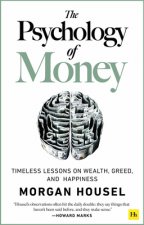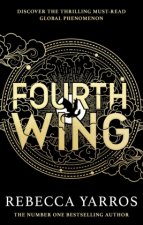
Kod: 01747548
Images of the Body in Architecture
Autor Kirsten Wagner, Jasper Cepl
Der Band Images of the Body in Architecture. Anthropology and Built Space thematisiert das Verhältnis zwischen dem menschlichen Körper und dem gebauten Raum, das die Architektur in Praxis und Theorie auf elementare Art und Weise b ... więcej
- Język:
 Angielski
Angielski - Oprawa: Twarda
- Liczba stron: 360
Wydawca: Wasmuth & Zohlen, 2014
- Więcej informacji o książce

58.76 €
Zwykle: 59.93 €
Oszczędzasz 1.17 €

Dostępna u dostawcy w małych ilościach
Wysyłamy za 19 - 25 dni
Potrzebujesz więcej egzemplarzy?Jeżeli jesteś zainteresowany zakupem większej ilości egzemplarzy, skontaktuj się z nami, aby sprawdzić ich dostępność.
Dodaj do schowka
Zobacz książki o podobnej tematyce
Podaruj tę książkę jeszcze dziś
- Zamów książkę i wybierz "Wyślij jako prezent".
- Natychmiast wyślemy Ci bon podarunkowy, który możesz przekazać adresatowi prezentu.
- Książka zostanie wysłana do adresata, a Ty o nic nie musisz się martwić.
Więcej informacji o Images of the Body in Architecture
Za ten zakup dostaniesz 148 punkty
 Opis
Opis
Der Band Images of the Body in Architecture. Anthropology and Built Space thematisiert das Verhältnis zwischen dem menschlichen Körper und dem gebauten Raum, das die Architektur in Praxis und Theorie auf elementare Art und Weise bestimmt. Mit den drei Schwerpunkten zum anthropometrischen, physiologischen und disziplinierten Körper wird an die jüngere Körpergeschichte angeschlossen, deren Ergebnisse erst in Ansätzen auf die Architektur bezogen worden sind. Intendiert ist eine kritische Anthropologie der Architektur. Dabei wird zum einen nach den der Architektur historisch zugrunde liegenden Körperbildern gefragt, nach ihren Visualisierungen und ihrer Bedeutung für den gebauten Raum. Zum anderen wird die Architektur selbst als eine soziale Praxis betrachtet, die in ihrer Materialität und räumlichen Ordnung den Körper bedingt. Der Band versammelt Beiträge aus der Kulturwissenschaft, Architekturtheorie, Kunstgeschichte, Medizingeschichte, Soziologie und Philosophie. §The essays collected in this volume are intended to stimulate research in the anthropology of architecture on the basis of a critical history of the body and its cultural constructions. §The analogy between architecture and the human body is rooted in the fundamental impact the latter has on ordering, symbolizing, and interpreting the world. Correspondingly, the metaphorical conceptualization of the built environment in terms of the human body was already practiced in early cultures and has determined architectural theory since antiquity. While the architectural treatises of early modern times vividly imagine anthropomorphic and anthropometric figures, they seem to be overcome by an architectural theory that is based on purely rational as well as mechanical laws. However, these figures were never totally abandoned, and Le Corbusier s Modulor is only one, if not the most prominent example, for their ongoing reception and transformation in modern times. The human sciences of the 19th century played a significant role in this process. Physiology and psychology brought about not only new experimental devices for analyzing the human body and its physiological functions, but also new images of the body that directly went into aesthetics, art history, and architectural theory. This new understanding of the body had a large impact on the production and reception of modern architecture. Due to this background the arts eventually became anthropologically grounded. §With contributions by Tobias Cheung, Scott Drake, Günter Feuerstein, Tanja Jankowiak, Eckhard Leuschner, Harry Francis Mallgrave, Indra Kagis McEwen, Irene Nierhaus, Philipp Osten, Heleni Porfyriou, Paolo Sanvito, Christoph Schnoor, Sven-Olov Wallenstein, Frank Zöllner, Beatrix Zug-Rosenblatt, and others. §On the editors: §Kirsten Wagner is professor for cultural studies and communication science at the University of Applied Sciences in Bielefeld. She studied art history, German literature, sociology, and cultural studies in Braunschweig, Oldenburg, and Berlin. She received a PhD for a dissertation on the spatialization of knowledge in the computer era. From 2002 to 2010 she was a research fellow at the Institute for Cultural Studies at Humboldt-Universität zu Berlin. Her research focuses on images of the body in architecture, the theory and history of spatial knowledge organization, aesthetics and theories of perception in modernity, and the image of the city. §Jasper Cepl is assistant professor at the Technische Universität Berlin, where he has taught architectural theory since 2003. He studied architecture in Aachen and Berlin. §He is the author of Oswald Mathias Ungers. Eine intellektuelle Biographie (Cologne 2007), for which he received a PhD in 2006. Having published widely on the history and theory of architecture, he has also, among other things, edited a monograph on Hans Kollhoff in 2004 and the anthology Quellentexte zur Architekturtheorie (with Fritz Neumeyer) in 2002.
 Szczegóły książki
Szczegóły książki
58.76 €
- Pełny tytuł: Images of the Body in Architecture
- Podtytuł: Anthropology and Built Space
- Autor: Kirsten Wagner, Jasper Cepl
- Język:
 Angielski
Angielski - Oprawa: Twarda
- Liczba stron: 360
- EAN: 9783803007315
- ISBN: 3803007313
- ID: 01747548
- Wydawca: Wasmuth & Zohlen
- Waga: 1175 g
- Wymiary: 247 × 166 × 33 mm
- Data wydania: 15. December 2014
Ulubione w innej kategorii
-

Gravity Falls Journal 3
16.39 € -23 % -

Berserk Deluxe Volume 1
44.37 € -11 % -

Berserk Deluxe Volume 2
52.22 € -

White Nights
3.51 € -23 % -

It ends with us
8.75 € -18 % -

48 Laws Of Power
18 € -9 % -

A Little Life
17.50 € -

Berserk Deluxe Volume 3
48.80 € -2 % -

Atomic Habits
16.19 € -29 % -

Surrounded by Idiots
10.46 € -29 % -

Jujutsu Kaisen, Vol. 23
9.75 € -26 % -

The Official Stardew Valley Cookbook
22.33 € -22 % -

The 48 Laws of Power
24.55 € -5 % -

Berserk Deluxe Volume 4
45.18 € -10 % -

A Good Girl's Guide to Murder
8.14 € -25 % -

Iron Flame
16.29 € -17 % -

Berserk Deluxe Volume 5
50.41 € -

A Curse For True Love
10.36 € -12 % -

Twisted Hate
10.15 € -20 % -

It Starts with Us
10.66 € -17 % -

Reckless
10.25 € -20 % -

Powerless
10.46 € -18 % -

Twisted Love
9.75 € -24 % -

The Husky and His White Cat Shizun: Erha He Ta de Bai Mao Shizun (Novel) Vol. 6
16.19 € -19 % -

Twisted Lies
9.75 € -17 % -

Vagabond (VIZBIG Edition), Vol. 1
24.55 € -

Berserk Deluxe Volume 6
51.11 € -

Court of Mist and Fury
9.35 € -18 % -

Court of Thorns and Roses Paperback Box Set (5 books)
50.01 € -20 % -

Everything I Know About Love
10.36 € -29 % -

Twisted Games
9.75 € -17 % -

Psychology of Money
18.91 € -3 % -

Fourth Wing
10.25 € -28 % -

A Court of Wings and Ruin
10.76 € -6 % -

The Courage To Be Disliked
10.96 € -14 % -

A Court of Silver Flames
10.15 € -20 % -

The Ballad of Never After
10.15 € -20 % -

Meow
20.72 € -

Once Upon A Broken Heart
9.85 € -23 % -

Secret History
9.75 € -17 % -

Berserk Deluxe Volume 7
47.99 € -4 % -

Good Girl, Bad Blood
8.54 € -20 % -

Jujutsu Kaisen, Vol. 1
9.35 € -21 % -

As Good As Dead
9.05 € -16 % -

Heaven Official's Blessing: Tian Guan Ci Fu (Novel) Vol. 1
17.60 € -16 % -

No Longer Human
13.37 € -16 % -

Heaven Official's Blessing: Tian Guan Ci Fu Vol. 4
17.60 € -12 % -

Guardian: Zhen Hun (Novel) Vol. 3 (Special Edition)
24.95 € -16 % -

House of Leaves
24.34 € -18 %
Osobní odběr Bratislava a 2642 dalších
Copyright ©2008-24 najlacnejsie-knihy.sk Wszelkie prawa zastrzeżonePrywatnieCookies






 Vrácení do měsíce
Vrácení do měsíce Zdarma od 49.99 €
Zdarma od 49.99 € 02/210 210 99 (8-15.30h)
02/210 210 99 (8-15.30h)